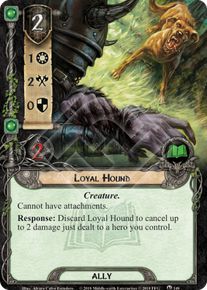I recently had an inquiry for Caleb regarding player cards, that may be added to the encounter deck:
The rules state, that every player may set up to 3 cards aside, which can potentially be added to the encounter deck: Ranger of the North, Wind from the Sea, Tom Bombadil and Eagle of the North. Now only Ranger Summons asks for "1 of your set aside" Rangers, the other events only ask for "a set aside" card. Does this mean, I can use cards in my deck, which target the set aside cards of other players, or may everyone only use his own set aside cards?
The answer I got was:
QuoteYou may target you r teammates set-aside cards except in the case of Ranger Summons.
Cheers, Caleb
